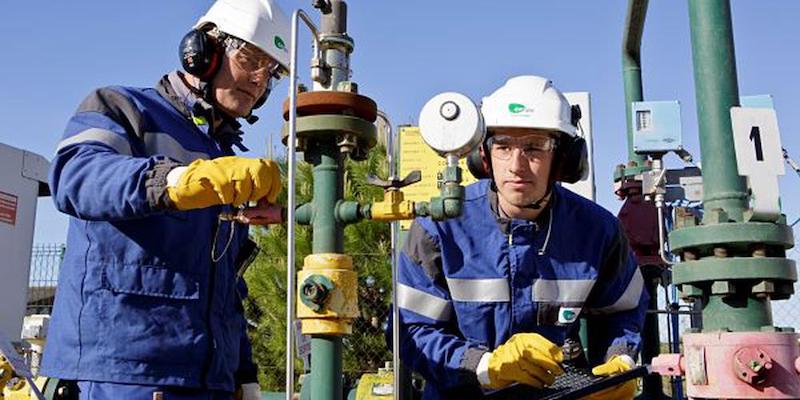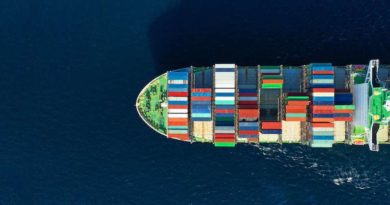
Shaping the European gas networks of tomorrow
With the publication of the REPower EU plan and the gas decarbonisation and hydrogen package, the European Commission has set a clear course for the transformation of the European gas infrastructure. As a key element of the competitiveness of the energy system, the contribution of infrastructure to security and sustainability issues will become even more important to face the dual challenge of the energy crisis and climate change. Infrastructure promotes sectoral integration, beyond synergies between electricity and molecules, it fosters synergies between sectors – such as industry, agriculture, waste management, and road and maritime transport – and enables fast and cost-efficient pathway to climate neutrality.
Securing and diversify supplies in a spirit of solidarity and cooperation
To prepare for potential disruptions of Russian supplies and in response to the growing risks to Europe’s security of gas supply, the European Commission has adopted, among other things, a new regulation in July 2022 that introduces an obligation to fill gas storage facilities before winter. In France, such provisions were already in place since 2018 and have been strengthened. French storages will have to be filled at 100% by November 1st this year, which is equivalent to circa 30% of annual national consumption.
In addition, as an immediate response to a possible shortage of Russian gas which still represents 17% of the French supply portfolio, additional LNG capacities are available in the Fos terminal since May 2022 and will be made available in Dunkirk in the second half of 2022. France and Europe will be able to rely on an additional 5 bcm floating LNG regasification facility that will come into operation in Le Havre by summer 2023. Also, GRTgaz has worked with stakeholders and public authorities to set up a load shedding mechanism which could be activated, if necessary, to reduce the consumption of major French gas users, to secure the gas supplies of sensitive sites and preserve its usage for household consumers.
This mechanism will be an important instrument for achieving the new European plan to reduce gas demand for next winter. Finally, a website will be created to alert French consumers to possible tensions and invite them to adapt their consumption.
Scaling up the biomethane production and usages
REPower EU encourages us to accelerate our actions to develop biomethane. This locally produced renewable methane that can be directly injected in the gas grid is one of the main levers to reduce our dependence and strengthen European energy sovereignty. Biomethane production in Europe has an important potential, now estimated by Gas for Climate at 41 bcm in 2030 and 151 bcm in 20501. Together with Germany, Italy, Poland, Spain and Sweden, France is amongst the countries with the largest production potential, estimated at 320 TWh by 2050 (excluding hydrogen). In addition to the current technologies (anaerobic digestion and thermal gasification) and sustainable feedstocks (manure, agricultural residues and sequential cropping), other promising technologies such as hydrothermal gasification of wet feedstock will allow to unlock an even larger potential. Reaching 3 bcm in the EU today, the production of biomethane in Europe is scaling up rapidly. For example, it represents almost 28% of gas consumption in Denmark in 2022, compared with 9% at the beginning of 2019.
For France, it accounts for 7 TWh – a capacity greater than that of a nuclear reactor- and is expected to almost double to 12 TWh in the next 2 years.
France has the capacity to fully replace its Russian gas supplies by renewable methane by 2030. To reach the 35 bcm targeted by REPower EU and to further strengthen this national dynamic, France is putting in place an additional set of support measures for new projects, beyond the feed-in tariffs already in place.
It sets up a call for tenders for the construction of new production capacity, as well as a new financing mechanism for biomethane projects (biomethane production certificates), which is based in particular on an obligation to incorporate biomethane into suppliers’ portfolios. To go further and give substance to the European ambition, we need a European alliance for biomethane, which should enable the necessary legislative provisions and financial support to be put in place in 2022.
The European hydrogen network as enabler for the creation of the hydrogen market
The development of a fit to purpose infrastructure is an essential enabler to reach the ambitious targets set forth by the European Commission for the consumption of renewable hydrogen – 10 million tonnes produced in Europe and 10 million tonnes imported by 2030, as well as for increased targets for renewable hydrogen in the industry and in the transport sector.
There will be no continental hydrogen market without appropriate logistics for transportation and storage. Europe can take advantage of its well-developed gas infrastructure and convert part of it to transport large quantities of renewable of low carbon hydrogen across Europe, at a cost 10 to 20 times lower than transporting electricity.
The development of local networks within hydrogen valleys constitutes a first stage where production and consumption of such commodity is relatively close. The French Hydrogen Strategy aims to develop 6.5 GW of electrolysis capacity by 2030 to decarbonise industry and has a budget of 7.2 billion euro. Such capacity would represent the production of nearly 700,000 tons of renewable and low-carbon hydrogen and would need 37 TWh of electricity. The first projects are being developed across France in valleys (Rhone, South Alsace, along the Seine River from le Havre to Paris) and ports (Fos-Marseille, Saint Nazaire, le Havre, Dunkerque). Cross-border projects are also emerging, such as Mosahyc, which will connect France to Germany and Luxembourg, and at the border between France and Belgium between Valenciennes and Mons.
A hydrogen corridor is foreseen to emerge in Southwest Europe from 2030 onwards, gradually connecting valleys from 2030. It will provide access to low-cost hydrogen from the Iberian Peninsula and potentially from Morocco to meet demand in France and Germany.
In addition to a new interconnection between the Iberian Peninsula and France, 1,200 km of pipeline across France are needed for the creation of 200 GWh/d of capacity to supply hydrogen to Germany. 60% of these hydrogen pipelines will be converted from existing gas networks. Storage needs will also arise with the multiplicity of actors and more particularly with the needs of the power system. According to RTE, hydrogen is needed in most of the 2050 scenarios to provide seasonal flexibility to the power system.
Preparing for this type of development to respond effectively to the energy transition challenge brings us to some of the key issues to be tackled in the design of energy infrastructure: how to produce, transport and store energy the most efficient way, using different vectors like electrons and molecules? To respond to this, a coordinated planning of electricity, gas and hydrogen must be launched now to give visibility to the actors of the value chain, which would allow to seek for an optimum in terms of networks.
This planning should help to position the hydrogen storage facilities needed for power, to manage the transition from fossil gases to new gases and to redraw the map of biomethane and hydrogen networks. It should also allow the right choices to be made between developing new power infrastructure and using existing gas infrastructure for hydrogen.
This will allow the best use of existing gas networks converted to hydrogen and will enable the backbone to be built at a competitive cost. This hydrogen backbone will make exchanges at European level more fluid, optimise supply and demand, and strengthen the security of hydrogen supply for the benefit of European consumers.
To conclude, I would like to stress on three points that are key for transmission operators to play their full role in building the European gas networks of tomorrow.
· Securing gas supplies in the context of REPower EU means developing biomethane throughout Europe and, in the short to medium term, the reversal of natural gas flows from West to East, which requires network adaptions and additional regasification facilities. A clear and efficient process is needed to select the best projects in Europe to replace Russian gas well before 2027.
· Hydrogen is not yet a commodity and much remains to be done to build the hydrogen market. A flexible approach is needed to build on the acquis of the gas and electricity markets and to define a target model and appropriate integrated planning encompassing molecules and electrons. The implementation of these definitions should be progressive and pragmatic, according to national dynamics.
· All three models of gas transmission system operators (OU, ISO and ITO) should be allowed after 2030. There is no reason to exclude the ITO model after 2030. ACER and the European Commission agree that all three models work well and have made it possible to create the large single energy market we know today. A gas TSO operator that would not be allowed to become a hydrogen TSO would have no interest to convert its infrastructure from methane to hydrogen and this would hinder the development of the hydrogen infrastructure.
________________________________________________________
1 https://www.europeanbiogas.eu/wp-content/uploads/2022/07/2022-07-05-PR_BiomethanePotentials.pdf




